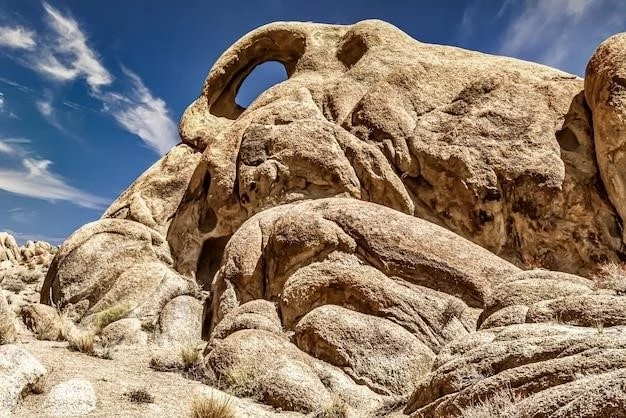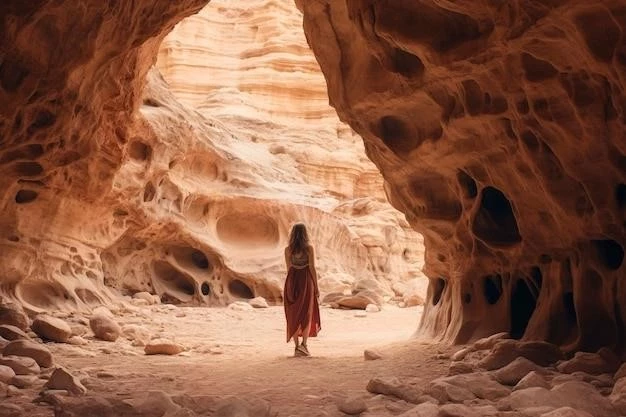The Lost City of Petra: Carved into Jordan’s Sandstone Cliffs
The air hung thick with anticipation as I stood at the entrance of the Siq, a narrow gorge leading to the fabled city of Petra. I had heard whispers of this place, a city carved into the very heart of Jordan’s sandstone cliffs, hidden from the world for centuries. Now, I was about to witness it with my own eyes.
The Siq, I quickly learned, was an experience in itself. Towering walls of sandstone, sculpted by wind and time, rose on either side, their colors shifting from pale pink to deep ochre as the sunlight danced across their surface. The air grew cooler as I ventured deeper, the silence broken only by the soft crunching of sand beneath my feet and the occasional birdcall echoing from above.
After what felt like an eternity, but was probably no more than 20 minutes, the path took a sharp turn, and I found myself face-to-face with the Treasury, Petra’s most iconic monument. It was a moment that sent shivers down my spine.
Carved into the sheer rock face, its façade intricately detailed and impossibly grand, the Treasury seemed to radiate an aura of mystery and power. Words can hardly capture the feeling of standing there, dwarfed by its sheer scale, the history of countless civilizations seeming to emanate from its sandstone walls.
A City Built on Trade and Ingenuity
As I ventured further into the city, I began to piece together the story of Petra. This wasn’t just a collection of stunning monuments, it was once a thriving metropolis, a testament to the ingenuity and artistry of the Nabataean people who called it home over 2,000 years ago.
The Nabataeans, skilled traders and masters of water management, carved their city from the unforgiving desert landscape. I learned about their intricate system of dams, cisterns, and channels that collected precious rainwater, allowing them to thrive in a region where water was scarce. Evidence of their ingenuity was everywhere, from the water channels etched into the Siq walls to the vast network of cisterns hidden beneath the city streets.
Walking through the city center, I found myself surrounded by the remnants of their lives: the Royal Tombs, their facades carved with intricate designs and colossal statues; the Roman Amphitheater, a testament to Petra’s later Roman influence; and the Street of Facades, lined with the weathered remnants of homes and shops, whispering tales of everyday life in this extraordinary city.

Beyond the Monuments: Hiking to the Monastery
While the Treasury and the city center are undoubtedly breathtaking, Petra offers so much more to those willing to venture further. I knew I couldn’t leave without experiencing the Monastery, or Ad-Deir, as it’s known locally.
Reaching the Monastery requires a strenuous climb up 800 stone steps carved into the mountainside. It was a challenging trek under the Jordanian sun٫ but the reward at the top was well worth the effort.
Emerging from the final steps, I was greeted by a panoramic view that took my breath away. The Monastery, even larger than the Treasury, stood majestically against the backdrop of the vast, rugged landscape. It was a view that spoke of ancient civilizations, of human ambition and artistry, of the enduring power of nature.

Tips for Your Own Petra Adventure
My journey to Petra was an unforgettable experience, one I would recommend to anyone with a sense of adventure and a love for history. Here are a few tips to make the most of your own visit:
- Allow ample time: Petra is vast and deserves more than a fleeting visit. I recommend spending at least two days to fully explore the site and soak in its atmosphere.
- Start early: The Jordanian sun can be intense. Get a head start and avoid the midday heat, especially if you plan on hiking to the Monastery.
- Hire a local guide: While exploring independently is rewarding, a guide can offer invaluable insights into the history, culture, and hidden gems of Petra.
- Wear comfortable shoes: You’ll be doing a lot of walking, often over uneven terrain, so comfortable footwear is essential.
- Stay hydrated: Carry plenty of water with you, especially during the warmer months.
A Timeless Wonder
As I left Petra, the setting sun casting long shadows across the sandstone cliffs, I couldn’t help but feel a sense of awe. This lost city, hidden for centuries and rediscovered, is a testament to the enduring spirit of human creativity and resilience. It’s a place where history comes alive, where the echoes of ancient civilizations whisper on the wind, and where the desert landscape holds secrets waiting to be uncovered.
My journey through Petra was more than just a trip; it was a journey through time, a reminder of the power of human ingenuity, and an experience that will stay with me forever.










